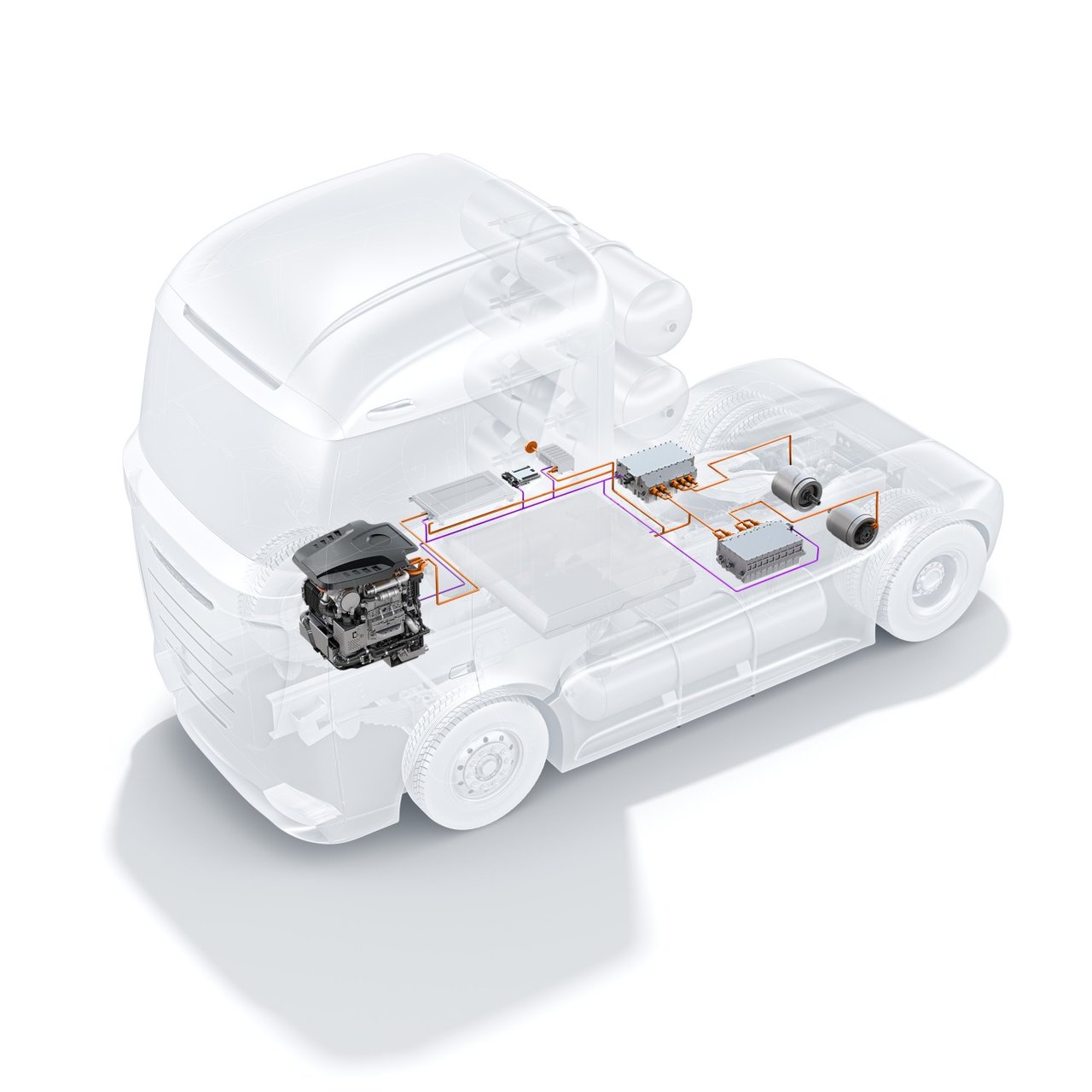Fuel cell
The fuel cell is an electrochemical energy converter. It is used to convert the stored chemical energy in hydrogen into electrical energy. In fuel cell vehicles, this energy is either supplied directly to an electric motor or is stored in a battery.
Function
A process known as cold combustion converts the chemical reaction energy from hydrogen and atmospheric oxygen into electrical energy. This is done by splitting the hydrogen into electrons and protons. A thin platinum layer on the two electrodes acts as a catalyst to speed up the reaction rate. The central element is a plastic membrane, which only protons can pass through.
The positively charged electrode - the anode - is supplied with hydrogen. The catalyst breaks it down into protons and electrons. When the anode is connected to the negatively charged electrode (cathode), the hydrogen protons pass through the membrane towards the cathode, where they combine with the oxygen from the air to form water. The hydrogen electrons have to take an alternative route. They pass along a wire from the anode to the cathode. The resulting flow of electric current charges the battery or powers the electric motor.
The electrochemical process occurs with no local emissions. It primarily releases heat and steam. No hazardous substances such as particles or nitrogen oxides are produced.
Fuel cell drive design
A typical fuel cell drive consists of the following main components:
- Fuel cell stack
- Air compressor
- Hydrogen tank
- Lithium ion battery
- Electric motor
The fuel cell stack is the core element of the fuel cell drive. A fuel cell stack is a stack of fuel cells connected in series. The stack generates the electrical energy that powers the fuel cell vehicle. Each stack has to operate reliably. Therefore, control units play a crucial role in vehicle operation as they monitor all functions of the fuel cell and ensure that the drive runs as efficiently as possible.
The air module supplies the cathode with atmospheric air. The hydrogen tanks are used to store the gaseous hydrogen, highly compressed to several hundred bar. The electrical energy generated in the fuel cell stacks powers the electric motor and is stored in the lithium ion battery.
Unlike the charging process on battery powered electric vehicles, the filling process for hydrogen is very similar to that for petrol and diesel. Thus, for fuel cell technology to become widely established, an extensive network of filling stations will be required. However, the system technology for hydrogen filling stations is extremely complex and setting up the corresponding infrastructure is very expensive. In contrast to battery powered electric cars, the number of fuel cell cars registered is very low.
Protection of the environment
Hydrogen technology plays an important role in terms of achieving climate friendly mobility, and particularly in the electrification of heavy commercial vehicles. At least, this is true where hydrogen is produced using climate neutral renewable energy. Because fuel cell vehicles do not produce any harmful substances or CO2, at least locally, they are more environmentally friendly than vehicles with internal combustion engines. However, the overall efficiency of fuel cells from power generation to the wheel is low. Experts expect a figure of between 25 and 35 percent. As a result, fuel cell vehicles require large quantities of power, which should ideally be produced using CO2 neutral methods.
The large hydrogen tanks and the extensive system technology remain relatively expensive and increase the weight of the vehicles. Because of its good storage properties, hydrogen has advantages over battery powered electric drives for heavy vehicles and over long distances.
Safety
Like every other fuel, hydrogen requires specific safety precautions. For example, hydrogen is extremely volatile. Therefore, to ensure efficient and safe operation the stack has to be perfectly sealed. Appropriate measures can reduce the safety risk to a level equivalent to that of vehicles with conventional drives.


